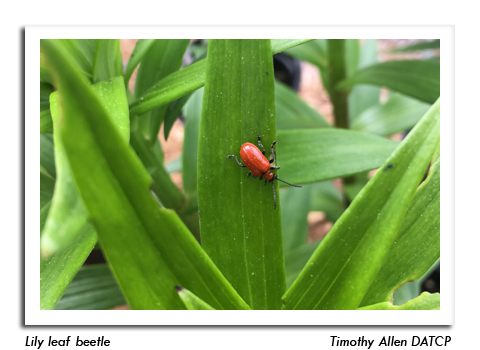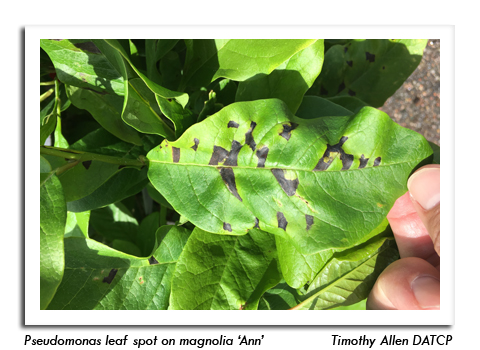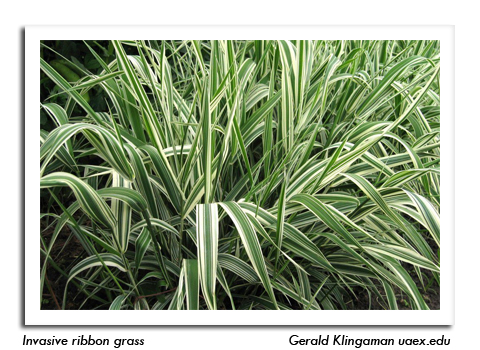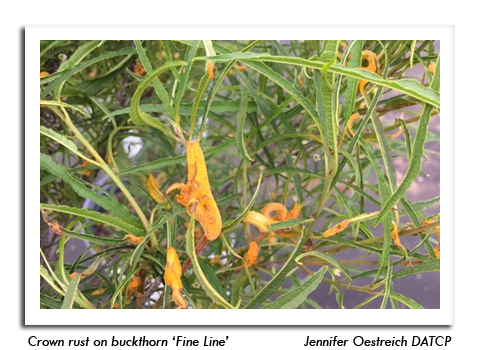
 |
|
|
Nursery & Forest
Volume 64 Number 9 Date 06/27/2019 LILY LEAF BEETLE - Adults, eggs, and larvae were found at multiple locations in Oneida County earlier this month. UW Entomologist PJ Liesch also confirmed beetles in Taylor County on June 26. First reported in Marathon County in 2014, LLB has now been confirmed in eight Wisconsin counties: Langlade, Lincoln, Marathon, Oneida, Portage, Shawano, Taylor, and Wood. The adult beetles are bright red and conspicuous, while the larvae can be found by inspecting Asiatic lily leaves for defoliation. The leaf damage caused by LLB larvae can be significant and, without intervention, will eventually kill the plant. Recommended controls include manually removing and killing adults and larvae, scraping eggs from the undersides of leave, or applying an insecticide labeled for use on ornamental plants. PSEUDOMONAS BACTERIAL BLIGHT - Nursery inspectors found symptoms of this bacterial disease on 'Ann' magnolia in Iron and Marathon counties. Bacterial leaf blight was previously noted on several varieties of common lilac shrubs in late May, in southern Wisconsin nurseries. Although the causal pathogen Pseudomonas syringae is named for lilac, from which it was first isolated, it has a wide host range. On magnolia, symptoms of infection appear as angular, dark brown leaf spots that may have a yellowish halo. Problems can be exacerbated by overhead watering and are usually more common in seasons with prevailing cool, wet weather. -- Timothy Allen, DATCP Nursery Inspector INVASIVE RIBBON GRASS - The ribbon grass species Phalaris arundinacea var. picta was being sold at a Chippewa County nursery, a violation of the DNR Chapter NR 40 Invasive Species Rule. Under the rule, ribbon grass is classified as a "Restricted" invasive species considered to be established in the state and have the potential to "cause or have the potential to cause significant environmental or economic harm." Ribbon grass has now invaded Wisconsin landscapes near wetland habitats and other riparian areas, where it outcompetes native vegetation. This perennial bunchgrass has flat blades with a rough texture on both the upper and lower surfaces. The ligule is large (up to ½ inch long) and transparent. The single-floret flowers bloom from May to June. Control of ribbon grass is labor-intensive and costly, often requiring sequential years of mechanical and chemical intervention (mowing, hand pulling, soil tilling, herbicide application, etc.) and burning. APHIDS - A variety of aphids feeding on various herbaceous ornamentals and vegetables have been noted in nurseries and garden centers this month. Most plants are susceptible to aphid feeding, especially when young, and many aphid species are primary vectors of plant diseases. Routine monitoring for aphids should be underway. Control options include dislodging with a forceful spray of water, using commercially available biological controls, or treating severe problems with insecticidal soaps or horticultural oils. -- Shanon Hankin, DATCP Nursery Inspector GYPSY MOTH - Bacillus thuringiensis var. kurstaki (Btk) treatments were applied to approximately 19.575 acres in Barron, Buffalo, Burnett, Crawford, Chippewa, Douglas, Dunn, Eau Claire, Iowa, Grant, Green, La Crosse, Lafayette, Pepin, Vernon, and Washburn counties this spring, with all Btk spraying ending for the 2019 season on June 6. Mating disruption, or pheromone treatment, is scheduled to begin on June 28 in southwestern Wisconsin. Unlike the earlier spring treatments that targeted gypsy moth caterpillars, mating disruption targets adult male moths by interfering with the male's ability to find females. CROWN RUST - The orange-yellow spots characteristic of this rust disease were observed on 'Fine Line' buckthorn during recent nursery inspections in Marinette County. Although not particularly damaging to buckthorn, the spots produce spores capable of infecting oats and significantly reducing grain yield. The extent and severity of infection varies from year to year, depending on weather, the amount of rust inoculum present, and the acreage of susceptible varieties. Cool, humid weather favors rust development. Recommended controls include pruning out and destroying infected leaves, watering during the morning hours, and keeping the leaves as dry as possible. In some years, heavy amounts of rust inoculum on the buckthorn host may indicate greater rust potential for oats. -- Jen Oestreich, DATCP Nursery Inspector 





|
|
|